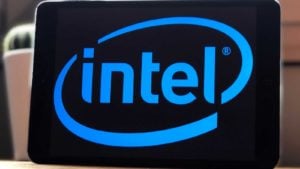Intel (NASDAQ:INTC) management knows its stock price is deeply undervalued as they just announced an accelerated buyback program on Aug. 19. Intel stock will benefit from this buyback program since it represents a significant return of capital to shareholders.

For example, year-to-date the stock is down over 17% and over the past year, it is up just 4.5%. By contrast, the Nasdaq 100 Technology Sector Index (NASDAQ:NDXT) is up 45% over the past year and up 21% year-to-date. So, Intel stock has done a lot worse than the average of the top 100 technology stocks.
Moreover, the stock is cheap on a price-earnings basis. It trades for just 10.2x its expected 2020 $4.85 EPS by the average of 20 analysts polled by Seeking Alpha.
Moreover, Morningstar says its past five-year P/E ratio average is 15x earnings. This means Intel stock is at least 33% undervalued. Put another way, the stock has the potential to rise 50% from 10x earnings to 15x.
Intel Can Afford The Accelerated Buyback
Intel said it would buy back $10 billion of its common stock between now and the end of 2020. At today’s price that amounts to about 202.9 million shares. It already has agreements for 166 million shares or 81.8% of the expected total. More importantly, $10 billion represents about 4.76% of its $210 billion market capitalization.
The way this helps shareholders is mainly through dividend increases. For example, with 5% fewer shares outstanding the company can afford to increase its dividend per share by 5% every year now at the same cost as before.
So, for example, over 10 years, this brings in 50% more real income to shareholders at no higher cost. That, in turn, will lead to a higher stock price since at the same dividend yield as before the stock would rise by 5%. So, again this could lead to a 50% stock price increase over 10 years. Therefore, in effect, it doubles the value to shareholders over 10 years.
Moreover, Intel can clearly afford this share buyback. In Q2 the company made $7.75 billion in free cash flow to pay for the dividends which cost just $1.4 billion. So, going forward the company has $6.35 billion to pay for debt reduction and share buybacks.
Where This Leaves Intel
Intel bought back between $3.5 billion and $4.5 billion in the last year. Last quarter Intel halted its share repurchases. Therefore, the $10 billion buybacks this quarter is only $1 billion to 2 billion more than it would have normally done otherwise over the past two quarters.
Intel says it will have repurchased $17.6 billion of the $20 billion authorization it announced in October 2019 with this $10 billion buyback. It will complete the remaining $2.4 billion “when markets stabilize.” There is no indication of what that means, or if the company will return to buybacks in Q4.
Some analysts on Seeking Alpha think the buybacks are not important given that Intel is falling behind in technology. They specifically refer to the company’s 7nm product transition delayed versus prior expectations. Others think it is a “strong signal.”
However, Jefferies analyst Mark Lipacis was more brutal. According to Seeking Alpha, as he said “its 7nm transistor would be delayed follows its 10nm transistor delays, and leads us to believe its transistor challenges are systematic and that TSMC/AMD’s transistor lead will extend.”
What To Do With Intel Stock
I believe that this is a brilliant move by Intel as it gets its technology back on track. Taking advantage of the weakness in the Intel stock through share repurchases will increase shareholder value.
Assuming the company repurchases up to 5% of its equity every year for five years will allow the dividend to rise by 25% at no higher cost to the company. Moreover, it also allows the company to post higher earnings per share at the same level of net income.
Patient value investors will probably be well off to take advantage of this weakness in the stock. The buyback catalyst will help the stock eventually mover higher.
As of this writing, Mark Hake, CFA does not hold a position in any of the aforementioned securities. He runs the Total Yield Value Guide which you can review here.
